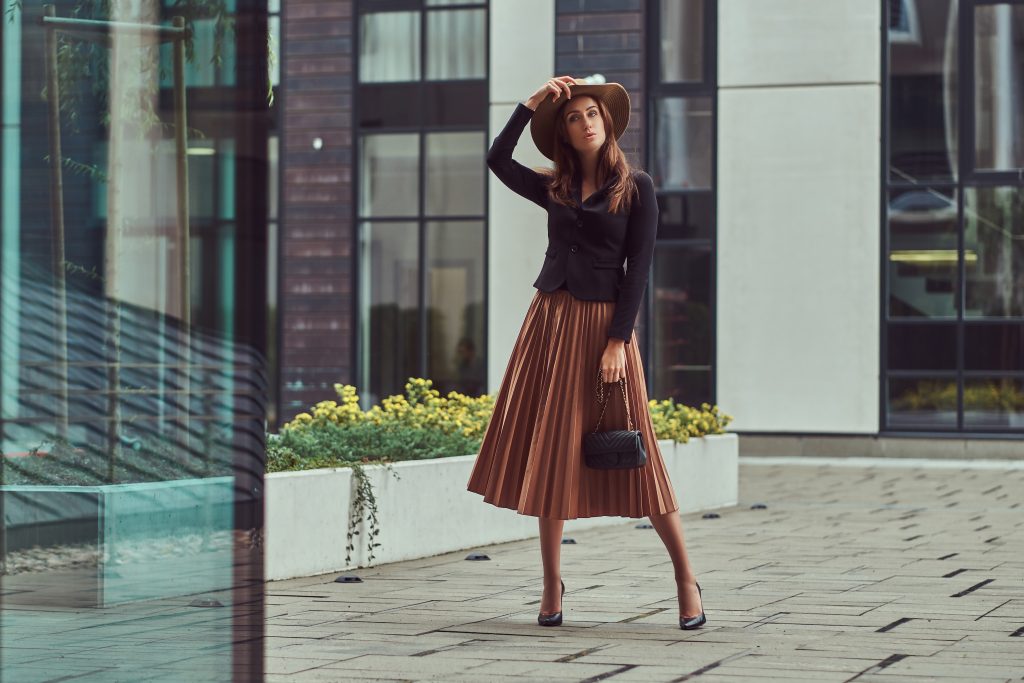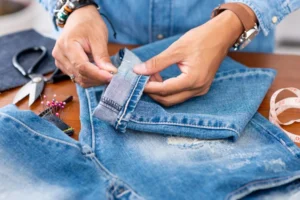If you’re just getting started with sewing, you might be feeling a little overwhelmed by all the possibilities out there. With so many different patterns and techniques to learn, it can be difficult to know where to start. Fortunately, when it comes to beginner-friendly projects that require minimal fitting and basic techniques, the clear frontrunner is simple skirts or elastic waist pants! In this blog post we’ll explore why these garments are considered some of the easiest for first-time sewers and how they provide an excellent starting point on your sewing journey. So if you’re looking for an approachable project that won’t take long but yields satisfying results – read on!
Introduce sewing basics - tools and materials
Sewing is a great gateway hobby that can be easily learned and enjoyed. Before jumping in, let’s take a look at some of the basics. Start by gathering a few important tools – some scissors, pins, needles, thread and a seam ripper are all essential for any seamstress. You’ll also have to purchase fabric and notions such as elastic or zipper for certain garments (depending on your individual project). Once you’ve gathered the necessary materials and tools, consider starting with an easy project such as an elastic waist pants or skirt as those require basic techniques with minimal fitting adjustments. With just a bit of practice, you’ll be able to stitch up beautiful garments like a pro!
Skirt and elastic waist pants
A skirt and elastic waist pants are both easy garments to sew, but they offer some distinct differences. Skirts rely on the shape and fullness of the fabric to give it an attractive silhouette. They may have a zipper closure, elastic waistband, or tie in the back. Elastic waist pants are less fitted with an adjustable band along the top that can be tightened or loosened to increase/decrease the circumference. These pants also often come with side pockets for total comfort and convenience. In terms of construction, skirts usually require gathering or pleating for fullness; whereas elastic waist pants often have simple flat pattern pieces. Both garments are perfect for those just beginning their journey in sewing!

The steps for making a basic skirt or elastic waist pants
When Learning to sew, one of the best places to start is with a basic skirt or elastic waist pants. The first step will be cutting the fabric into pattern pieces according to your size. Next, you should stitch the side and insert seams together. After that, you should fold the top of the waistband over and stitch the elastic around it. For your finished look, hemming is recommended after stitching on the elastic. Finally, you have created a beautiful skirt or elastic waist pants!
How to sew on a zipper and install an elastic waistband?
Sewing a zipper and adding an elastic waistband can be daunting for first-time sewers. However, it doesn’t need to be a stressful experience; following the right steps makes the process much easier. To start, pin the zipper into your garment in the desired location and stitch or tack it in place. From there, test that you can slide the zipper up and down easily before making a secure seam along either side of the zipper to keep it in place permanently. When that’s finished, use a coordinating thread to attach your elastic waistband by anchoring it at several points around the garment opening for an even fit. With these simple steps under your belt, you can easily create comfortable garments with zippers and waistbands!
Customize your garment with trims, appliques, and other details
Customizing your garment with trims, appliques and other details can be a fun way to upgrade your creation and make it unique. Whether using fabric bias binding along the hemline for an interesting look, sewing on decorative buttons down the front, or adding ribbons, patches and lace for extra flair, each of these accessories can contribute to an eye-catching design. With careful attention to detail and the right trims and appliques, you can easily add texture and dimension to any garment – making it truly distinctive.
Tips for troubleshooting common problems that beginners face
Sewing a garment can be daunting for beginners, and it can be easy to get discouraged when things don’t go as smoothly as expected. But there are simple tips that can help troubleshoot the common problems that sewing rookies frequently encounter. When measuring, it’s important to use the correct measurements from your pattern, or you may end up with an ill-fitting garment. If you notice puckering seams after stitching or hems falling off track, make sure you are using the proper needle and thread for your fabric and machine. To check that you have cut properly, pin pieces together and lay them over the template piece before basting or stitching. Finally, if gathering fabric is a challenge, there are various tools such as hand gathering threads and tweezers that can come in handy! With these troubleshooting tips in mind, beginners will find sewing their first garment much smoother sailing!

Conclusion
Sewing may seem daunting for a first-time seamstress, but the process is achievable and ultimately rewarding. Having a basic garment – such as a skirt or elastic waist pants — to start with will make learning the principles of construction and fit easier. With some practice and the right tools, anyone can make their own couture garments at home. Crafting projects are also great ways to express your creativity, show off your personality, save money while being fashionable, and making something truly unique that no one else owns! With precision and attention to detail, you will be surprised with what you can turn out! Finally, take joy in seeing your completed skirt or elastic waist pants and knowing that you created it all by yourself. So don’t be intimidated by sewing – try it today!
Frequently Asked Questions
Answer: Beginners should start with lightweight, woven fabrics such as cotton, linen or rayon. These fabrics are easier to work with than thicker materials, and they usually require less stabilizing and interfacing.
Answer: A basic sewing kit should include scissors, pins, needles, thread in various colors, a measuring tape and a seam ripper. Depending on the garment you intend to sew, you may also need additional tools such as an iron or presser feet for your sewing machine.
Answer: Simplified patterns like skirts or tops with minimal shaping can be good starting points for beginner sewers. There are also many tutorials available online with detailed step-by-step instructions that can help guide learners through the process more easily.



